Resilience - Manawaroa

























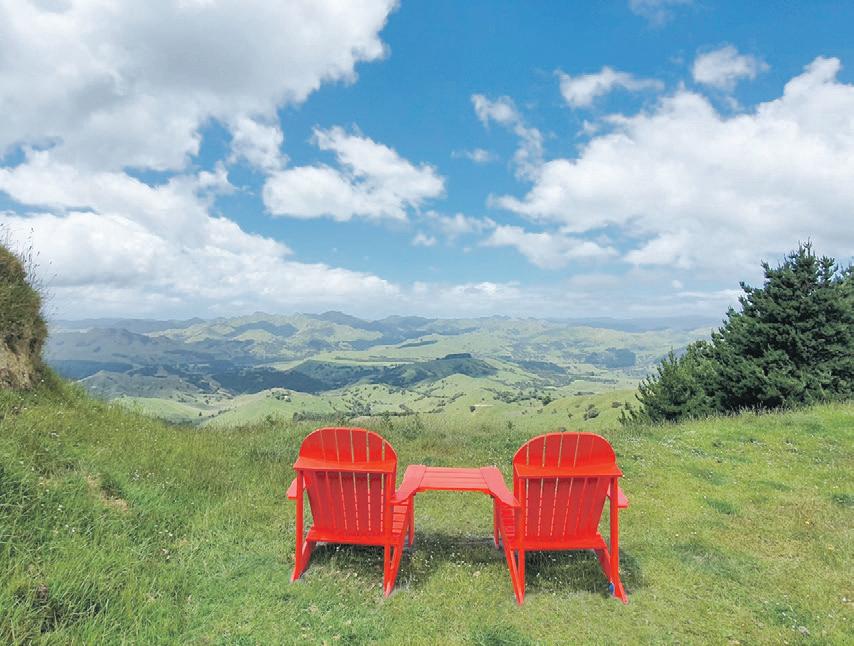























































































































It’s more important than ever that we plan for a sustainable future for our growing district, with a key focus on our infrastructure and improving levels of service.
This Consultation Document outlines the key projects we propose focussing on over the next ten years, as well as some projects our previous Council planned some of which are either delayed or cancelled due to a shift in priorities. It is designed to give you a detailed overview on our vision and direction so you may be able to give us your informed feedback before we make any final decisions.
We’re seeking your feedback on two consultation items –Transportation and Wastewater headworks. These have been deemed significant in terms of community interest and financial impact.
Feedback is key, as this gives us a steer of what you the community wants before we make any decisions. There will be plenty of time for you to share your views with us during the consultation process, both in person and via submission forms, so please do not pass up the opportunity to do so. A list of public events, and your elected representatives’ contact details can be found on page 22 of this document. Council will finalise the plan in late June which will inform the rating figure for the years ahead, which is why it is important that we hear from you before making any final decisions.
Rates affordability is always at the forefront of our minds. Like you, we want to see Carterton thrive, not just today but for decades to come, while also balancing the increasing cost of living. Striking this balance for our community requires a lot of hard work and is not something we take lightly. We need to continue to provide adequate levels of service to our community, upgrading infrastructure to ensure reliability and longevity, and fulfil our requirements to deliver on our community outcomes. Some of these costs are outside of Councils’ control such as legislative requirements, inflation,
increased costs of materials and insurances. The proposed increase for the 2024/25 year (starting 1 July 2024) of 15.09% includes all these things (after growth in the rating database). We also collect rates on behalf of the Greater Wellington Regional Council (GWRC). This rating figure is yet to be set by GWRC.
The services our Council delivers have an impact on your day-to-day lives – whether it’s the roads you drive on, the water you drink, accessibility to our popular parks, pools, library and Events Centre, the ability to flush your toilet, or the community groups we give financial support to. Please take the time to read through this document and don’t hesitate to get in touch.
I need to reiterate, this is a draft document that has taken some months to prepare. In doing so, we have struggled in some cases with inadequate government funding and assistance for rural roads. We have struggled with a 37% increase in roading costs and with the stark reality of up to 40% of many projects we undertake being spent just on traffic management. We are fully aware, and sensitive to the challenges ratepayers are facing in these difficult economic times and there are real possibilities that our determination to build in resilience and forge ahead with certain projects may need to be modified. It is therefore up to you to read this document and if you have strong views, to make a submission, either written or verbal that we may be better informed come the time we have to make the final decision. In you I trust.




A Long Term Plan is a Council’s most important document. It sets out what we plan to do over the next decade, and how it will be paid for. It includes detailed information on the activities, services, and projects we intend on delivering, when we will deliver them, where and how.
It also includes the detail around our funding and financial management and tells you what your rates may look like for the next 10 years.
By law, we must have a Long Term Plan, and we must review it every three years.
Consultation Closes
5 May at 5pm
5 April
Consultation Opens
Public feedback open for submissions
We need your feedback on the projects or issues that have a significant cost, have high community interest or are different from what we said we would do in our last Long Term Plan.
This consultation document outlines the LTP and the key decisions we need to make, based on what our community tells us. Based on the proposals in this consultation document, the proposed increase for the 2024/25 year (starting 1 July 2024) is 15.09% (after growth in the rating database). Although for individual ratepayers the actual change may be smaller or greater, depending on their location and services provided, and their new QV valuations.
One of the main components of rates increases across the country is the increasing cost of operating and maintaining infrastructure levels of services and facilities. You can read more about this on page 9.
Hearings
15 & 16 May
You can opt to speak to your submission at a public hearing. The Council will discuss the recommendations after the hearings. Both sessions are open to the public to view
Your feedback will help the mayor and councillors to make decisions on which issues our community values. LTP period begins 1 July
Council agrees to changes and formally adopts the policy
The setting of rates for year one (2024/25) of the LTP rates will incorporate the budgetary decisions made as part of the Long Term Plan 2024-2034
Other supporting documents included as part of this Consultation
Draft Financial Strategy
Draft Infrastructure Strategy
Forecasted financial statements
Forecasted funding impact statements
Draft Schedule of User Fees and Charges 2024/25
All of these documents are available online at www.cdc.govt.nz/haveyoursay
We will also have some printed copies available at our main council office at 28 Holloway Street.
Ngā whainga kua tutuki
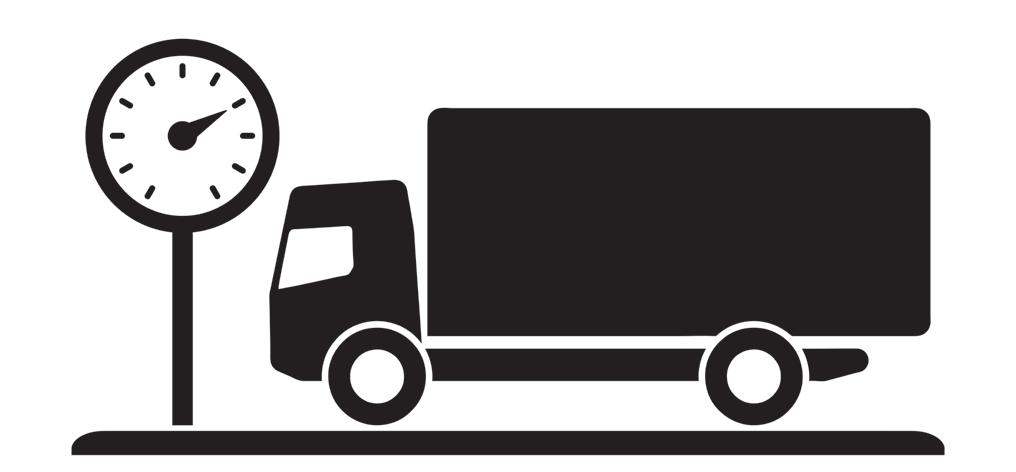
Installed a second weighbridge at our Transfer Station
Secured
4 million litres of emergency potable water
Completed our Wastewater Treatment Reservoirs
Worked with NZTA Waka Kotahi Transport Choices and local schools to FUND the construction of bicycle sheds across the district
vital upgrades to our Frederick Street urban
drinking water treatment plant
with the construction of two new storage tanks

REMOVED OVERDUE FEES forequitable accesstoour Library
andjoinedthe SMART library givingsystem,residents
500,000accesstoitems

Ngā rerekētanga mai i te pae tawhiti o mua
We have cancelled the $4.5 million construction of a new council office admin building to prioritise more urgent projects
We are no longer relocating our operations building or expanding the Holloway Street carpark
Funding
We are no longer allocating funding for the potential purchase of laneways in the town centre
a community led initiative to install
A new slide at our free outdoor pools for the whole community to enjoy

Worked with local hapū to acknowledge & restore the mana of Ngā Tāwhai Reserve and repurposed it for recreational enjoyment
Introduced free soft plastic recycling to our transfer station
Repaired
$795,000 worth of cyclone damaged infrastructure in 2022/2023 financial year
Installed new public toilets at Howard Booth Park, Sparks Park, and Ngā Tāwhai reserve
We are no longer building a new dog pound.
Instead, we have made the existing pound more suitable to meet our legislative requirements
Installed four electric vehicle chargers on Holloway Street
Planted 10,000 mānuka trees to research land-based discharge of treated wastewater effects on soils and vegetation
Our previous Wairarapa wide approach to alternative transport is being refocussed within Carterton to connect people across our district
Without commitment from other Wairarapa Councils, we are not allocating any funding towards investigating a combined Wairarapa Council merger
Resilience or manawaroa is our ability to protect our assets and continue to provide services to our community in the face of social and economic pressures, natural disasters, and climate change. Resilience also underlines our community spirit and our capacity to connect and share with our whānau, hapori, family, neighbours, and friends to continue to make Carterton a great place to live, work, and play.
These icons will appear throughout this document showing how our projects relate to our resilience theme.
Our Infrastructure Strategy prioritises the need to provide for the resilience of our infrastructural assets by identifying and managing risks relating to natural hazards, and by making appropriate financial provision for those risks.
We want to ensure our current infrastructure is being maintained and upgraded to align with our Asset Management plan, which addresses current use, longevity, resilience and prepares us for severe weather events. We want to meet the needs and expectations of our community around alternative modes of transport, as well as accommodating for all levels of accessibility.
The Carterton district is experiencing steady growth, with our population expected to increase over the next 30 years. We need to manage growth, both in number of houses and demand on our wastewater network. We are committed to managing the environmental impact of treated wastewater through increasing volumes being discharged to land. Additionally, we want to continue to support local businesses with trade waste agreements to manage their demands.
Our communities and three waters networks continue to be affected by natural hazards, which over time, will be exacerbated by climate change.
Affordability is becoming increasingly important as a large portion of the district’s network comprises of aging pipes. We will continue to support Greater Wellington Regional Council in the implementation of the Wairarapa Water Resilience Strategy which addresses Wairarapa’s challenge of being one of the most affected areas for water availability, as well as GWRC’s flood mapping, that provides up-todate information on the projected extent of flooding during a significant rain event.
Climate change is already having – and will continue to have –increasing impacts on our natural environment and the resilience of our built infrastructure. Our role in the community’s effort to mitigate and adapt to climate change includes leading by example, advocating on behalf of the community with central government and other agencies, developing local resources, infrastructure management, and planning for change.
We will continue to seek external funding sources to help fund our activities to reduce impact on rates. We will do this by seeking support from NZTA Waka Kotahi when repairing cyclone and severe weather damage, and utilising grants to support waste minimisation, climate mitigation and mode shift projects rather than relying on our Carterton ratepayers.
We need to increase our council and community resilience for emergency events, in particular to prepare for, and respond to, the increasing frequency and severity of adverse weather events. This includes working with the community, strengthening our Emergency Operations Centre, and increasing staff capability and capacity.
Our Council and our community need to prepare to be resilient against increasingly extreme conditions, prepare to mitigate the impact, and plan our recovery from extreme weather events. This includes not only severe rainfall events and flooding, but also extreme heat and drought conditions that more frequently affect our district.
Part of our Ten Year Ruamāhanga Climate Change Action Plan includes investigation into photovoltaic by installing solar panels where possible, lead a stronger transition to Electric Vehicles, and enable other agencies to provide solutions to reduce residential and commercial power consumption as well as supporting electric transport options such as EV charging ports.
As a community, we want to work in tandem with our environment, which involves firstly avoiding unnecessary waste then buying materials that can be reused and recycled, with disposal to landfill as a last resort option. To achieve this, we need to meet our responsibilities under the Wellington Region Waste Management and Minimisation Plan [WMMP]. This plan outlines how we create, manage, and minimise waste. The guiding principles are waste reduction; a circular economy; environmental guardianship; challenging mindsets; collaboration and participation, and resilient waste and resource recovery systems.
Visit www.lesswastegreaterplace.co.nz/ wellington-region for more information on the WMMP.
We must consider our options for managing areas prone to coastal erosion and flooding through heavy weather events via rising rivers and stormwater. We want to mitigate the risk to our community through planning and adaptation where required and exploring options to relieve financial and emotional burden on affected residents. With the help of Central Government funding, we will be enhancing flood resilience at Flat Point for almost 100 properties frequently affected by surface water flooding during heavy rainfall. This will help mitigate the effects of severe weather events on this remote community.
Under current legislation, our Council is responsible for improving the social, economic, environmental and cultural outcomes for our communities.
VISION: A welcoming and vibrant community where we all enjoy living


Quality, fit for purpose infrastructure and services that are cost-effective and meet future needs
A vibrant and prosperous business and primary sector investing in and supported by the community
A community that is productively engaged in employment, education and community service


Te Āo Māori/Māori aspirations and partnerships are valued and supported
A community that embraces and encourages our cultural diversity and heritage
A community that fosters and promotes our character and creativity
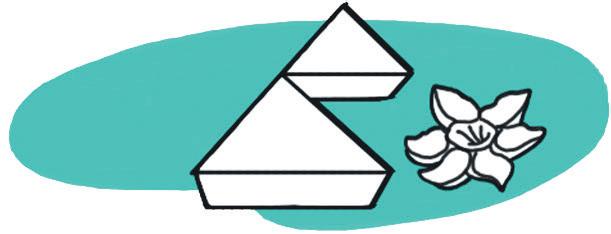

A strong and effective council providing trusted leadership
A caring community that is safe, healthy, happy and connected
An empowered community that participates in Council and community-based decision making
Fit for purpose public facilities, spaces, parks and rural reserves

Safe and resilient water supply, wastewater and stormwater systems
Healthy, sustainable waterways
An environmentally responsible community committed to reducing our carbon footprint and adapting to the impacts of climate change
A resilient community capable of responding to and recovering from environmental shocks

We know that rates affordability is a genuine concern for many of our residents. Every new project we consider needs to balance the financial impacts versus the associated risks and the value of the investment.
The proposed rating increase and amount of debt described in this document are based on our preferred options for the Long Term Plan. These options are not set in stone and we are looking forward to your feedback.
There are two consultation items that drive most of the cost increases,
The proposed CDC rating increase for the 2024/25 year starting 1 July 2024 is 15.09% after growth in the rating database and based on the preferred options for both consultation items.
Over the next 10 years
We expect our district’s population to increase by 6%
Carterton’s population aged 65+ will increase by 30%
We’re continuing to invest in our 20 Council owned public parks and reserves covering more than 56Ha, including public facilities such as the Clareville Cemetery, the outdoor pools, the library and Events Centre
We’re investing $179.6m of capital and operating expenditure into our three waters infrastructure.
outlined on pages 10 – 13. Each option relates to how we invest in the infrastructure assets that support the lifestyle of our district – now and in the future. Because of the significance of these decisions, we are specifically seeking your feedback on them.
The percentage of rates we collect compared to the revenue we receive is based on 2024/25 year one, is 68%
We’re spending
$131m of capital and operating expenditure on upgrading and maintaining our roading network WATER SUPPLY $89.4m , WASTEWATER $84.7m , STORMWATER $5.5m
The previous Government passed legislation to implement a reform of water services, previously called the Three Waters Reform, then Water Services Entity (WSE).
This would have transferred the cost of managing and maintaining urban drinking water, wastewater and
stormwater away from Councils, and managed by a separate water entity from October 2024.
The current Government is repealing this legislation this year, however to date, detailed information has not been provided on how the new model will impact councils. Therefore, we will continue to budget for supplying these services ourselves, and invest additional funding into our water reserves for asset renewals than previously planned.
This information is included in the consultation document for information purposes only and is not a matter for consultation.
that do not align with our Infrastructure Strategy, and key vision and values
We have reviewed most of our fees and charges in line with inflation at 5% to apply a user pays model instead of applying them to all ratepayers
Employing local qualified inhouse staff at a market rate to deliver the majority of our services, eliminating unnecessary contracting costs
Wairarapa property owners will soon receive a 2024 Notice of Rating Valuation from QV in the post with an updated rating value for their property.
Property rating valuations are one factor used by councils to allocate rates across different types of rateable properties. These valuations will be used to determine the General Rates portion of your rates account.
Typically, where a property’s revaluation increase exceeds the average increase, the property will have a higher rates increase than the average. A property that has a revaluation increase below the average, the property will have a lower rates increase than the average.
For the proposed rates in this document, we have used the best available data (uncertified new QV valuations). QV’s figures are still
provisional which means they have yet to be independently audited by the Office of the Valuer General.
New rating values will be posted to property owners after 24 April 2024. The certified values will be applied by Council when the LTP is adopted on 26 June 2024.
If owners do not agree with their rating valuation, they have a right to object through the objection process before 31 May 2024 by calling QV on 0800 787 284.
Increasing costs of materials and insurances
key infrastructure projects and vital maintenance/ upgrades
We have two main issues we are facing with roading maintenance across the district:
The cost of maintaining our roads is increasing. It now costs 37% more to do the same as what we do currently.
Due to historic underinvestment, our roads have deteriorated to the point they are now requiring 30% more maintenance in terms of
number of potholes and general repairs. This means we need to increase our annual pavement rehabilitation from 0.3% of the network to 1%, increase our road resurfacing, and drainage renewal. A failure to do so will result in further deterioration of our roads to the point of road closures.
If we stick to our current level of service (as in, we make no changes to what we are doing now), there will be a significant rating increase, and yet our roads will deteriorate to the point of unsustainable number of potholes, road damage, unsafe roads and the potential closure of some roads.
Why have our roading costs increased so much?
There has been an increased amount of maintenance now required due to the previous underinvestment across the network
In the last financial year, we receivedTRIPLEalmost THE ROADING SERVICE REQUESTS than the year prior
Bitumen is no longer available locally and needs to be imported from Australia
THERE IS A TIGHT LABOUR MARKET in the roading sector, and not enough contractors to complete work across the country. Contractors are offering higher wages to attract more staff into the industry, which drives up our costs
The cost of maintaining our roads is increasing. It now costs
37% MORE
to do the same as what we do currently
It is becoming more challenging to gain permission to extract gravel from riverbeds, resulting in higher transportation costs to get it to Wairarapa
We want usable, safe roads that are fit for purpose and stand the test of time. We also need to ensure that delivering this service will not cause a high cost burden to our ratepayers both now and in the future.
We are proposing to reduce some of our other roading activities to achieve longevity in our roading and reduce the cost impact to ratepayers. These activities are:
Low Cost, Low Risk roading projects, which would mean not upgrading parts of the roading network we think require safety improvements.
We also want to recommend pausing some work on reinstating roads damaged from Cyclone Hale and Gabrielle, and North Island weather events (NIWE).
OPTION 1:
Usable, safe roads, with all emergency reinstatements, Low Cost, Low Risk projects, pavement rehabilitation to 1% of the network, and an increased focus on road maintenance, grading and culvert clearing.
IMPACT
Ability to improve intersections –reducing risk of serious incidents
Reinstate all Emergency works
RISKS
We believe this option reduces risk to the roading network by improving the level of service
OPERATIONAL SPEND
Total cost of $3.084m in Year 1 CAPITAL SPEND
Total of $3.645m in the first 3 years
OPERATIONAL SPEND
Total of $1.028m
$21.86 for every $100,000 of CV value in Year 1, as this is funded under the General Rate portion of your rates
OPERATIONAL SPEND No impact on debt
OPTION 2:
Ourpreferred option
Usable, safe roads that are fit for purpose, with pavement rehabilitation to 1% of the network, an increased focus on road maintenance, grading and culvert clearing, with some activities reduced.
This is our preferred option due to it being less of a cost burden to ratepayers.
The proposed rating increase is based on this option.
IMPACT
Significant reduction in Low Cost Low Risk projects such as making dangerous intersections safer
Reduction in Emergency repairs completed in relation to Cyclone Hale, Gabrielle, and NIWE, and any future emergency works
RISKS
Not addressing dangerous
intersections and known accident sites
Reduction in Emergency repairs completed in relation to NIWE with possibility of further decline in impacted roads and communities becoming isolated
Roading assets will be compromised
Communities such as Flat Point could become isolated
No impact on rates or debt as funded from subsidies and reserves OPERATIONAL SPEND
Total cost of $1.971m
OPERATIONAL SPEND
Total of $666,000
$14.15 for every $100,000 in CV value in Year 1, as this is funded under the General Rate portion of your rates
OPERATIONAL SPEND No impact on debt
Our Residents survey shows 81% of residents are happy with the reliability of our wastewater. To ensure our network remains reliable, we need to make some vital upgrades to our outdated treatment plant.
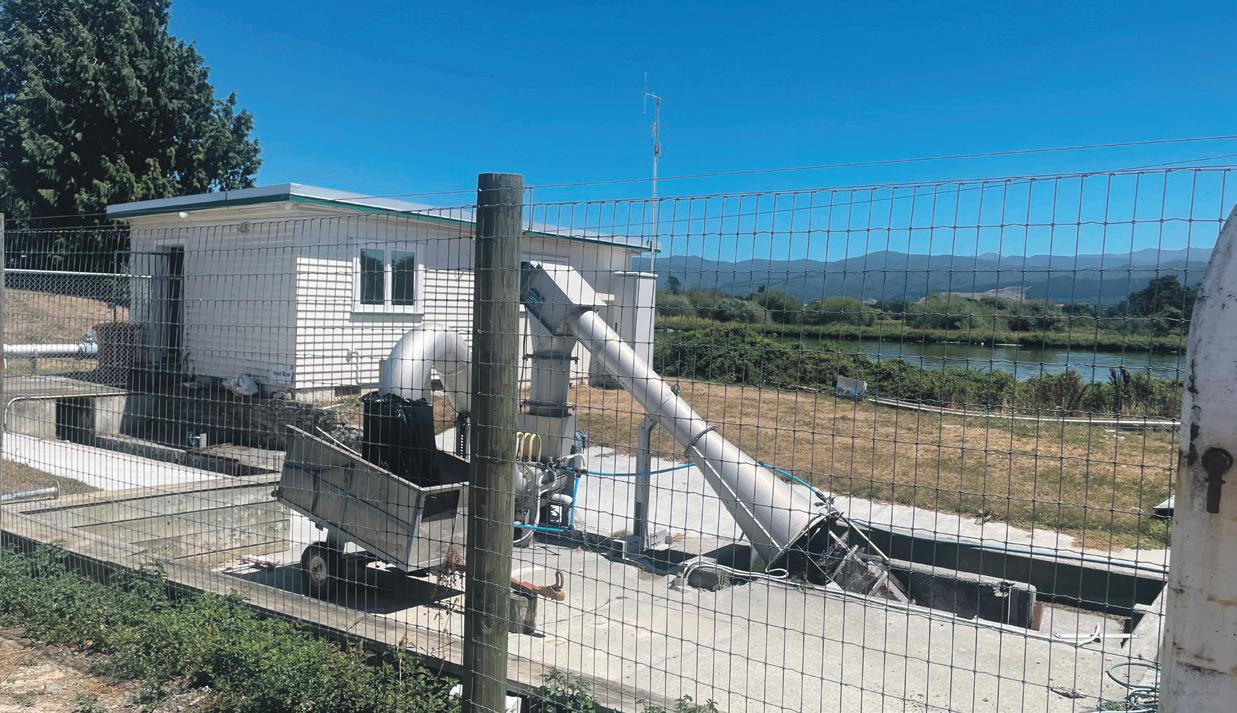

The new reservoirs are now complete and are NOT part of this consultation item
Our long-term vision is to improve the treatment of urban wastewater in a sustainable way and improve freshwater quality by removing treated effluent from streams. Carterton’s wastewater is processed at two different sites – our Dalefield Road wastewater treatment plant which has been in service since 1940, and our newly constructed wastewater treatment reservoirs on Daleton Farm which reached practical completion in 2023.
We want to make necessary upgrades to the facilities where the wastewater enters our Dalefield Road wastewater treatment plant. This equipment was last upgraded more than 60 years ago, has reached the end of its life, and is no longer manufactured. The equipment has served its purpose and we are now planning for the future to ensure the plant continues to operate as required.
The plant equipment performs a critical role in the treatment of the wastewater and the functionality of the oxidation ponds. There is a significant risk to our wastewater treatment process, which if failed, could inhibit our ability to comply with legislation and our resource consent, result in ongoing unpleasant odours, and may restrict our ability to accept trade waste from local businesses.
1
The project we want to undertake will have a positive compounding effect to improve our treatment of wastewater. These projects are designed to work together, as the benefits will be maximised once they are all completed.
The projects include:
2
3 Grit and fat removal –this is a vital step to remove grease, oil, and fat out of the wastewater so it can be treated
New primary sedimentation tank – This will remove untreatable solids that first enter a wastewater treatment plant from the sewer Foul air treatment – the aim is to achieve treated wastewater in a contained area to reduce smell pollution in town
OPTION 1:
Undertake all three wastewater components to meet best practice requirements, ensure network reliability, and meet compliance.
IMPACT
Grit and fat removal, new primary sedimentation tank and foul air treatment
Ability to meet compliance
Ourpreferred option
Miminimum required upgrades to meet compliance and ensure network reliability. This means an upgrade of the existing primary sedimentation tank as opposed to a new one, and no funding for foul air treatment. This is our preferred option due to it being less of a cost burden to ratepayers than Option 1.The proposed rating increase is based on this option.
OPTION 3:
Do nothing (status quo).
Grit and fat removal
Reduced ability to accept trade waste
Ability to meet compliance
Ability to allow for growth
Continue Support for our Local businesses with Trade Waste Agreements
RISKS
Increasing foul smells from the wastewater ponds
Need to replace primary sedimentation tank in the future (potentially within 2 – 5 years)
$12m over 5 years
Starting Year 1
RISKS
Discharge of raw, untreated wastewater into the Mangatārere Stream
Abatement notices, fines and penalties for breaching the conditions of our resource consent
Restricts our ability to accept trade waste
Very likely increase in foul smells from the wastewater ponds
Surcharge into the network preventing people from flushing toilets
Potential unbudgeted expenditure should the plant fail
Increased risk of meeting compliance
$6m over 3 years
Starting Year 1
$5.518m
over 10 years
Per connection to urban wastewater system, per year
Year 1 - $12. Year 2 - $69
Year 3 - $151. Year 4 - $232.
Year 5-10 - $313
Increase debt by $11.568m
$0
$3.090m
over 10 years
Per connection to urban wastewater system, per year
Year 1 - $12
Year 2 - $69
Year 3 – 10 $151
Increase debt by $5.568m No rating impact No debt impact
Maintaining and upgrading our infrastructure accounts for over half of our annual operating expenditure, and most of Council’s capital expenditure. This includes roads, footpaths, wastewater, our urban water supply, and stormwater.
Our infrastructure is essential to the health, safety, and transport requirements of the district, and has a significant impact on the physical environment. We need to strike the right balance between ensuring we have reliable, quality infrastructure, while weighing up the needs of our growing community, and how our infrastructure will be funded.
Our Infrastructure Strategy 2024 – 2054 considers the significant issues our infrastructure will face over the next 30 years, and how we plan to addresss them.
You can find the full Infrastructure Strategy online at www.cdc.govt.nz/haveyoursay
The key issues include:
wastewater, water supply, stormwater and transport upgrades we must address
THE COST and service delivery implications for residents and businesses of those options
Since our last LTP, we have reached a huge milestone by reaching practical completion of our new Daleton Farm Wastewater Reservoirs. These are now in operation and will help us achieve our long term vision of reducing discharge of treated effluent into our waterways. Our next challenge is to make necessary upgrades to the headworks at our Dalefield Road Treatment Plant which has reached the end of its life. This forms the basis of Consultation Item 2 on pages 12-13.
The upgrades to our water infrastructure in 2023 has meant we can now supply urban drinking water at a rate of 75 litres per second, which is enough to support peak demand until at least 2043. We have made significant improvements to our network which means only 16% of our water is lost through leaks, down from 38% in 2021. Our next challenge is to upgrade our water supply pH management to reduce ongoing operating costs, upgrade key water mains inline with our Asset Management Plan, and continue to invest more funding into our reserves for renewals of our assets.
Roading that is fit for purpose is vital for our community’s economic and social wellbeing, however, it is also the biggest contributor to our infrastructure costs. Due to historical underinvestment in roading infrastructure, we see an annual increase of 30% in required maintenance. On top of a rapidly deteriorating network, the cost of labour and materials are also increasing. We need to invest more funding into our roading programme to keep roads maintained to a safe and robust standard that stands the test of time. This forms the basis for Consultation Item 1 on pages 10-11.
Our stormwater network is in generally good condition, with 96% of our 19.5km piped network having a condition rating between average and excellent.
Part of our Asset Management Plan involves the progressive capture of asset condition by updating asset data during repair work.
We are not consulting on these projects but we still welcome your feedback on them.
Funding the newly purchased 85-hectare parcel of land adjacent to our new wastewater reservoirs at Daleton Farm. This could see the expansion of our strategy to remove the discharge of treated wastewater into waterways
We will be upgrading high-risk urban water mains based on the priorities set in our Asset Management Plan. Cost of $22m
We plan to install pedestrian access along one side of all urban roads with speed limits of 50km/h or less. Cost of $650,000
We will be developing $2.4m of trails across the Carterton district to provide alternative transportation options for those travelling across the district, while limiting use of State Highways. This includes plans to connect the town centre to the Clareville Sports Complex
We’re spending $1.5m across 10 years to de-sludge the Dalefield Road wastewater ponds to increase our ability to treat wastewater. This is an essential project for our older ponds, but is not needed for the three newly constructed ponds at Daleton Farm
We’re upgrading our water supply pH (potential of Hydrogen) management to reduce ongoing operating costs, and safeguard public health and the environment. Cost of $600,000
The Financial Strategy explains how Council will manage its finances over the next ten years, and the general approach and principles to be followed. To meet the reasonable needs of our community, the Council has applied the following principles:
The Council will spend just over $116.7 million on capital expenditure over the ten years ($11.7million in 2024/25).
The chart following provides a breakdown by major group of activities over the next ten years.
The largest share of the capital expenditure is on transportation (roads, footpaths, services) $40.1 million
This means we aim to match planned revenue and planned expenditure
or 34%, followed by wastewater $34.1 million or 29% and water supply $33.6 million or 29%.
The chart following breaks down capital expenditure between renewal of existing assets, responding to or anticipating growth in demand, and improving levels of service.
During the next ten years, we are expecting the following factors to have a significant impact on Council:
Borrowing and revenue constraints on council and its ratepayers, limiting Council’s ability to fund much needed infrastructure and the cost of this funding
pressures creating increases in costs against rates affordability
The need to renew and upgrade existing infrastructure to meet government standards and to maintain levels of service
Managing and responding to natural hazards, emergencies and climate change, including future investment in resilience of our infrastructure and assisting the community when events occur
The strategy builds on the Funding Needs Analysis and Revenue and Financing Policy recently undertaken in accordance with section 101 of the Local Government Act 2002.
You can view our full Financial Strategy, along with our Revenue and Finance Policy and our other Long Term Plan supporting documents at www.cdc.govt.nz/haveyoursay
Capital investment flows through to operational costs of depreciation, debt financing and the costs of operating and maintaining new assets.
Our operating budget requirements are forecast to increase from $29.1 million (2024/25) to $36.6 million (2024/34) over the next ten years, an increase of 26%.
The largest share of operating expenditure is on transportation (roads, footpaths, services) $91.3 million or 28%, followed by Community Services $68.4 million 21%,
water supply $55.8 million or 17% and wastewater $50.5 million or 16%.
We are spending $131.4 million of capital and operating expenditure on upgrading and maintaining our roading network.
We are investing $195.2 million of capital and operating expenditure into our three waters infrastructure. Wastewater $84.7 million, water supply $89.4 million, stormwater $5.6 million, waste management $15.5 million.
The Council has set prudential limits on the level of borrowing (debt) and the level of financing costs. These are shown in the following chart.
The Council has set prudential limits on the level of borrowing (debt) and the level of financing costs. These are shown in the following chart and are within the limits over the next ten years.
Debt rises steadily from $25.7million in 2024/25 to $53.0 million by 2033/2034 over the ten year period to fund capital works programmes for our infrastructure strategy.
Debt rises steadily from $25.7million in 2024/25 to $53.0 million by 2033/2034 over the ten year period to fund capital works programmes for our Infrastructure Strategy
The projected level of debt is well within Council’s interest and debt limits
In October 2023, we consulted with the public on our Revenue and Finance Policy, which has now been adopted. Part of this process includes adopting a Draft Rates Remissions and Postponement Policy.
We need to update to the remission policies required to include Te Ture Whenua Māori Act 1993 and other legal compliance requirements.
Affordability is a concern for both Council and ratepayers, which creates a balancing act in order to progress with projects that accommodate the needs of our changing community. While grappling with this balancing act, the Council has considered, as far as practicable, the requirements of the current community without compromising future generations.
For the next ten years, we plan to focus on fulfilling the aims outlined in our Infrastructure Strategy – the main projects being improving the level of service for roading, investing more funding into our water assets, and upgrading our outdated sewerage services to meet current needs and future demands. We are not planning
In order to allow rate relief where it is considered fair and reasonable to do so, the Council is required to adopt policies specifying the circumstances under which rates will be considered for remission. There are various types of remission, and the circumstances under which a remission will be considered for each type may be different. The conditions and criteria relating to each type of remission are therefore set out separately in the following pages, together with the objectives of the policy.
You have the opportunity to provide feedback on the Draft Rates Remissions and Postponement Policy before 5 May 2024. To read the draft policy, Statement of Proposal, and to provide feedback, visit www.cdc.govt.nz/haveyoursay
to increase significantly any of our other activities, but instead maintain a businessas-usual approach.
The chart below shows the projected rates during the Long Term Plan and the percentage increase in average rates.
In the 2024/25 financial year, the Council proposes to collect $20.3 million in rate revenue. This is an increase of $2.7 million on the current financial year and equates to an increase of 15.09 percent (15.6 percent pre growth) in the average rates after taking into account growth in the rating base. The average rates are the total forecast rateable properties in the district.
In 2025/26 the annual increase in rates
is anticipated to be 8.5 percent, 2026/27 13.0 percent and an average range for the remainder of the Long-Term Plan 3.3%.
Actual rates each year for individual properties will vary depending upon the targeted rates that are applicable, the differential rating category, and the valuation of each property.
Currently QV are in the process of finalising the district’s new valuations and the certified (audited) new valuations will be available from 10th April 2024.
In 2024/25 and for the remaining LTP we are anticipating low growth in rateable units and are not expecting a significant increase in rates revenue.
These figures do not inlcude the portion of rates we collect on behalf of GWRC, which are yet to be set by them.
Actual rates for individual properties will vary depending on the targeted rates that are applicable, the differential rating category, and the valuation of each property.
The table below includes GST and excludes the Greater Wellington Regional Council rates. It does not show rates rebates available to low-income households.
You will need your last rates assessment notice
and the latest rateable valuations provided to you by Quotable Value, or visit www.cdc.govt. nz/properties-and-valuations to view your latest valuation. These figures do not include the portion of rates we collect on behalf of GWRC, which are yet to be set by them.
The following table provides indicative rates assessments for a small range of rating categories. It includes the impact of the preferred option for each example. The new rating valuations may be subject to change due to the new QV valuations being uncertified at time of publication. QV are intending to advise rate payers of their new valuations by post from the 24 April 2024.


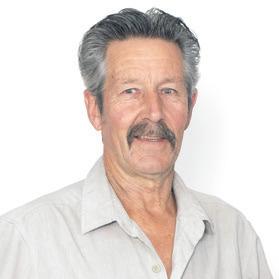

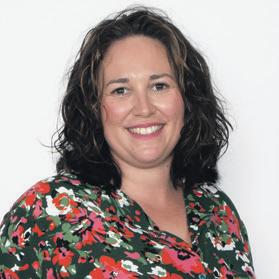

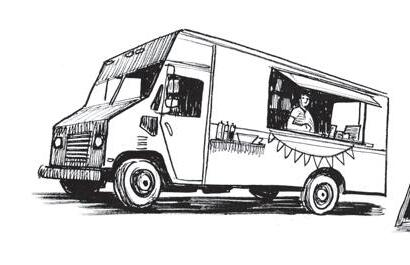




Submissions close 5pm Sunday 5 2024May
Name:
Address:
Phone:
Email:
Organisation (if submitting on behalf of an organisation)
All submissions, including your name, will be made available to the public and media, but contact details will be withheld.
Do you wish to speak about your submissions at a hearing on 15 – 16 May? YES
Please indicate which of the following options you support: YES OPTION 1:
Usable, safe roads, with all emergency reinstatements and Low Cost, Low Risk projects.
Usable, safe roads that are fit for purpose, with other activities reduced.
Ourpreferred option
Submissions close
5pm Sunday 5 May 2024
All submissions, including your name, will be made available to the public and media, but contact details will be withheld.
Please indicate which of the following options you support: YES OPTION 1:
Undertake all three wastewater projects to meet best practice requirements, ensure network reliability and meet compliance.
Minimum required upgrades to meet compliance and ensure network reliability.
Do nothing (status quo).
Do you have any other comments you would like to make about the two consultation items?
Ourpreferred option
Do you have any general comments you would like to make about the Long Term Plan Consultation Document 2024 – 2034?